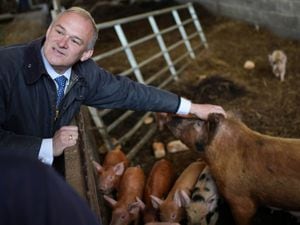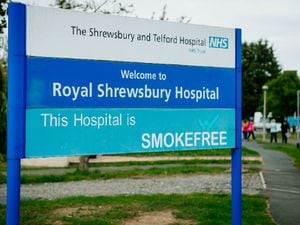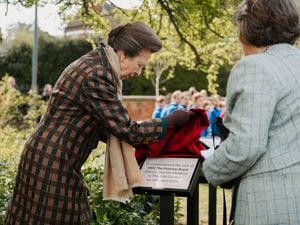Dame Agnes Hunt: A pioneer and visionary who cared for many
Clomp clomp, clomp clomp.
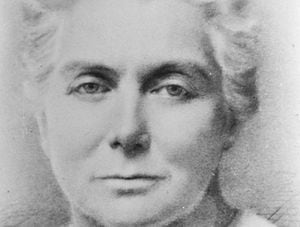
It was the sound of the approach of Agnes Hunt.
And for her patients it was the sound of an approaching angel.
Agnes knew all about suffering.
Aged only 10, she developed septicaemia and infective arthritis of the hip joint with high fever, and rapid destruction and dislocation of the joint.
“My apprenticeship to crippledom had begun, and also the great education of pain,” she wrote in her autobiography, This Is My Life.
Once, as young Agnes cried over her plight, a well-loved clergyman came into the room. In her birthday book he wrote: “Reared in suffering thou shalt know, How to solace others’ woe. The reward of pain doth lie, in the gift of sympathy.”
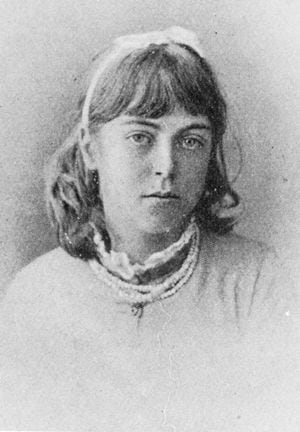
Dame Agnes said: “The result of this talk was that I began to think I had been especially sent on earth to help other cripples. I determined to become a hospital nurse.”
In later life the clomp, clomp, clomp of her crutches would tell patients and staff alike of her approach.
Dame Agnes was a pioneer, a visionary, and in some respects a bit of a rebel.
Today, many years after her death, her name lives on in the title of the Robert Jones and Agnes Hunt Orthopaedic Hospital at Gobowen, near Oswestry, which she founded, which has an international reputation for its work.
The complex includes the Midland Centre for Spinal Injuries, a centre of excellence which serves a catchment of 10 million embracing the West Midlands and Shropshire, North Wales, Mid Wales, South Mersey, and Cheshire.
And her name also lives on in her ethos – her patients-first approach and her creed of what makes a good nurse: “Common sense, gentleness, kindliness, and the power of giving hope and joy to those who are suffering.”.
Dame Agnes was Shropshire's own Florence Nightingale, and imposed few rules. To her hospitals were for the good of the patients, and neither medical nor hospital etiquette should stand in the way of that aim.
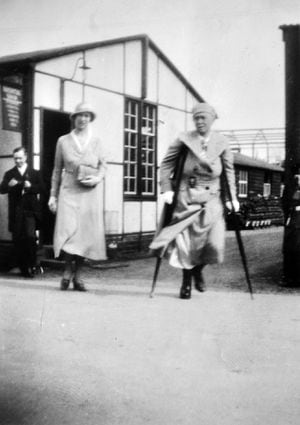
But the start of it all was not at Gobowen, but at Baschurch.
It was Agnes’ mother who heard that Florence House in Baschurch was to let and would be an excellent place to start a convalescent home.
Agnes and her friend Emily Selina Goodford – "Goody" – went to investigate.
She would recall: “Goody and I gazed sadly around on that forlorn house and garden. The house, which had stood empty for six years or more, seemed to protest against our intrusion; the dust and dirt lay thick, and the indescribable odour of bygone people pervaded the atmosphere.
“The garden had run riot.”
After supper, they went to bed.
“My sleep was one long chequered nightmare mixed up with bankruptcy and my mother’s stern voice remarking at intervals: ‘I always realised you were a congenital idiot.'”
The water came from a well, into which some of the drains ran.
The pair were undeterred, and the Baschurch convalescent home was founded on October 1, 1900, the first open air hospital for cripples (as they were termed in those days) in the world.
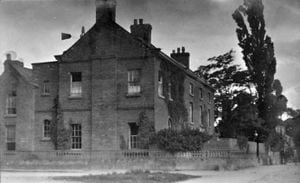
Open air? It was all part of the treatment, and patients stayed in sheds with one side open to the elements. The Baschurch home attracted increasing numbers of disabled children.
Towards the end of 1903 Agnes’ own condition had worsened and she went to see orthopaedic surgeon Mr (later Sir) Robert Jones of Liverpool.
It began a lifelong association. Children began going to Liverpool from Baschurch to be seen by him.
One one occasion Agnes, who was accompanying 12 children on the ferry, was accosted by a shocked woman who asked if she was “responsible for all those children.” Agnes blushed and said she was – whereupon the woman sternly pressed a tract into her hands. It was called: “The Wages of Sin is Death.”
It was not long before Mr Jones was regularly travelling to Baschurch to do operations on the dining room table.
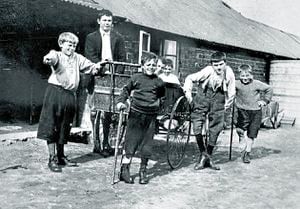
Gradually facilities improved and the home evolved into an orthopaedic hospital. One far-reaching innovation was the start of after-care clinics.
After the Great War – during which the hospital was swelled by soldiers – the British Red Cross Society gave £25,000 to rebuild or move the Baschurch hospital. Shropshire War Memorial also gave £9,000, and the money was used to buy the Park Hall Military Hospital and turn it into an open-air hospital of 320 beds.
In February 1921 all patients were transferred from Baschurch to this new “Shropshire Orthopaedic Hospital” at Gobowen.
It too was based on open air principles. The beds had wheels and patients would be taken down the lanes and into Oswestry to do their shopping.
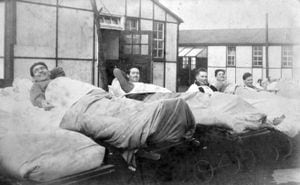
A few years later, Agnes was prompted by Robert Jones to start a regular training centre to teach disabled people how to earn a living.
Accordingly she collected four boys and two girls and told them they were now the Shropshire Orthopaedic Training School For Cripples.
“They were suitably impressed, but wished to know what happened next. As this was more than I could tell them, the meeting adjourned.
“I put a wet towel on my head, and tried to form plans,” Dame Agnes would later write.
From these beginnings in 1927, Derwen College was founded.
After Sir Robert’s death in 1933 the hospital’s title was changed to incorporate his and Dame Agnes’ name.
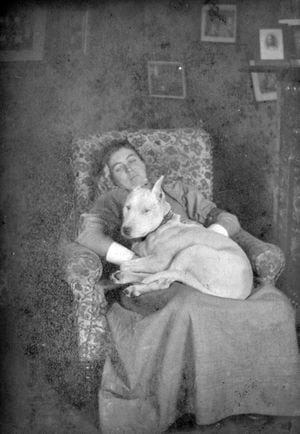
But let us wind back the clock to the beginning. Agnes Hunt was born into a large upper middle class family at Boreatton Park, Baschurch.
Her widowed mother, a portly woman with a dislike of children, decided to go to Australia to breed Angora goats. On arrival, Government officials told her there were no Angora goats in Australia.
A life of adventure followed, Agnes living for a time in the Australian bush and in Tasmania, where she went shooting and fishing for food.
She returned to England in 1887.
“During my last week at the ranch I received three proposals of marriage in one day. They were not very eligible ones. Still, I thought it was rather a record,” Agnes said.
Training as a nurse began at the Royal Alexandra Hospital in Rhyl and her early career included fighting typhoid in Rushden, Northamptonshire, and a smallpox epidemic in Middlesbrough.
Only eight years ago a remarkable picture came to light showing Agnes flopped exhausted in a chair in 1892 during her time at Rushden, with her fearsome bull terrier Mike on her lap, which she told in her autobiography had saved her from a tramp who came into the kitchen where she was staying and grabbed her.
The photo was in the possession of Mrs Dorothy Roberts of Wellington, but originally from Rushden, who was given it by a man in Rushden. The reason he did so was that teenage Dorothy was about to start as a student nurse at the Gobowen hospital and he thought she would be interested in his photo of the founder.
Agnes was made a Dame Commander of the Order of the British Empire in 1926. She died aged 80 on July 24, 1948.
That was a traumatic year for the hospital. Apart from Agnes' death, there were two other disasters. One was a fire which swept through the hospital in January. Happily patients were wheeled to safety and there were no fatalities, but the hospital had to be rebuilt.
And in the autumn there was an outbreak of typhoid at the hospital which killed seven people and infected over 100 more.
In a contemporary obituary, Sir Reginald Watson-Jones, an honorary consultant at the hospital, said both Sir Robert and Dame Agnes recognised merit not only in their equals, but in their juniors, and also shared a keen sense of humour.
“Neither believed that dignity was to be sought by rigid discipline of behaviour, yet each achieved supreme dignity. They believed in the joy of life and they believed in showing it.
"Without these qualities their brilliant success in the treatment of a patient, the organisation of a hospital, or the establishment of a great reform, could never have been achieved.”
As for Florence House, that became the Nightingale House care home but sadly it was served with a notice of closure by the National Care Standards Commission and shut in May 2003, with around 17 residents being moved out.
Planning permission was granted a few months later to turn the building into houses and flats.
FACTFILE
1867: Agnes Gwendoline Hunt born December 31, at Boreatton Park, Baschurch, the sixth of 11 children.
1884: The Hunt family travels to Australia.
1887: Agnes begins nurse training at the Royal Alexandra Hospital, Rhyl, completing it four years later at the Salop Infirmary.
1900: Florence House, Baschurch, opens October 1 as a convalescent home for the Salop Infirmary, with Agnes Hunt and Emily Goodford as Superintendents.
1918: Agnes receives the award of the Royal Red Cross.
1921: The Baschurch Home transfers to Park Hall Military Hospital, near Oswestry, and is renamed the Shropshire Orthopaedic Hospital.
1926: Agnes is created a Dame Commander of the Order of the British Empire.
1933: Sir Robert Jones dies January 14. The hospital renamed the Robert Jones and Agnes Hunt Orthopaedic Hospital.
1948: Dame Agnes Hunt dies July 24. aged 80 Buried at Baschurch churchyard.

